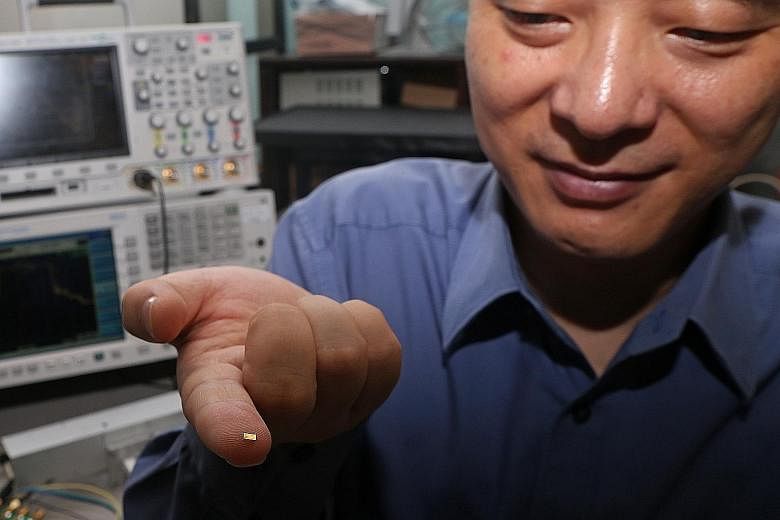Scientists at the Nanyang Technological University (NTU) have developed a microchip that allows the production of radar cameras that are about 100 times smaller than current devices.
The chip integrates all the functions of a radar camera within it. Current radar cameras can weigh up to 200kg .
Radar cameras are usually used in satellites and aircraft to produce detailed images of the earth's surface. These serve many purposes, such as monitoring traffic congestion and tracking environmental changes.
Given the microchip's size, it can be incorporated into things such as small drones, driverless cars and small satellite systems.
Speaking at a media briefing on Tuesday, Assistant Professor Zheng Yuanjin, who led the research team of six from NTU's School of Electrical and Electronic Engineering to develop the chip, emphasised its advantage over traditional systems.
Despite its size, NTU's chip-based camera can match, if not outperform, current devices.
It produces images that are twice as clear as those produced by conventional radar cameras, due to its increased sensitivity. It will also be cheaper to produce, costing between US$10,000 (S$14,100) and US$50,000 each, compared with the traditional radar cameras that cost US$1 million each.
In addition, the new camera will consume at least 75 per cent less power than current cameras.
NTU's new radar microchip was presented and published at the International Solid-State Circuits Conference held in San Francisco, California, earlier this month.
Many companies such as US aerospace firm Space X and Japanese electronics giant Panasonic have shown interest in it, said Prof Zheng.
Research will now focus on space applications, he added.
This will be carried out at the Smart Small Satellite Systems - Thales in NTU (S4TIN), a joint laboratory between NTU and Europe's largest satellite manufacturer, Thales Alenia Space.
He added that it will take another three to six years before the chip is ready for commercial use.
He is now working with NTU's innovation and enterprise company, NTUitive, to find industry partners to license the technology or to spin off a company.


